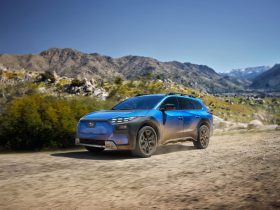On the surface it looks as though the US government is doing everything it can to encourage motorists to become involved in the electric vehicle market. However, if you take a look behind the scenes the picture is less clear as a number of investments have hit the buffers and in many ways the authorities seem to be suggesting that motorists “do as we say, not as we do”.
There are a number of ways to look at whether the US government is helping or hindering the take-up of electric vehicles which we will cover below with a conclusion.
Using taxpayer’s money
The use of taxpayer’s money to fund specific projects is something which has occurred through time immemorial bringing with it an array of different results and arguments. When these investments go well and industries become strong, not only do we see repayment of the original investment money but new employment opportunities and increased tax income for the authorities. Indeed the story of Tesla is one which springs to mind with the company repaying a $465 million US government loan early!
Compare this with the story of Fisker which had negotiated a $529 million loan from the US government although this was suspended at the $192 million drawdown level when the company failed to meet performance targets. Consequently the company filed for bankruptcy protection and is currently the subject of a number of bids, although the US government is unlikely to receive anywhere near the full $192 million of taxpayer’s money invested to date. This perfectly reflects the pros and cons of using taxpayer’s money, when investments go well the government is slapped on the back and welcomed with open arms, when they go wrong, as they do in business, the government is accused of wasting taxpayer’s money.
Changing legislation
The subject of changing legislation to make it more attractive for individuals to acquire electric vehicles, as well as commercial enterprises, is something which draws much criticism and skepticism from the voting public. While the reality is, especially with a new business, there needs to be some incentive to change from gasoline/diesel powered vehicles to a new technology which is relatively unknown to the masses, this does seem as though we are being told what to do by the US government.
Legislation changes have perhaps impacted California more than any other US state with car manufacturers selling vehicles in the state now obliged to insure that around 10% of their total sales are electric vehicles or some other form of environmentally friendly transport. This in itself has created markets and sub-markets in the California automobile industry but again skeptics suggest that this is manipulating the situation and creating an unnatural market. History shows that unless there is natural demand for a specific product or a specific service it cannot last forever, i.e. you cannot continue to move against the tide.
Tax income
Perhaps one of the most controversial areas of government life is tax income from the oil and gas industry which seems to be totally at odds with encouraging motorists to move towards electric vehicles. This is why many skeptics are uncertain whether the US government, and indeed other governments around the world, are as committed as they suggest to the new modes of transport available today. History shows that political leaning and commercial interests can move markets with the sudden disappearance of the General Motors EV1 electric vehicle in the late 1990s a perfect example of this – to this day the situation has never been completely explained.
The future changeover from large tax income from traditional oil and gas supplies to some form of replacement income relating to the electric vehicle industry is and always has been in the back of the minds of many US voters. Indeed we have already seen a number of US states introduce specific taxes for electric vehicle users which at this stage of development seems to be way too early. In many ways local authorities are now beginning to show their hand with regards to future taxation policies for electric vehicles because in reality any loss of taxation from oil/gas operations will need to be filled by other income streams.
Financial incentives
The size of current financial incentives being made available to those looking to acquire electric vehicles has set alarm bells ringing in the minds of many voters in the US. On one hand many people feel as though they are being force-fed electric vehicles against their will while others highlight the fact that their own tax payments are being repaid to those favoring electric vehicles with nothing for those sticking with traditional modes of transport – modes of transport which have been supported by the US government for decades.
As we mentioned above, financial incentives, whether direct to the purchaser or in the form of financial assistance to manufacturers, do in the short term at least, create an unnatural market. It would be wrong to suggest that financial incentives have not proved to be long-term market-makers in the past but there will come a time when the government will need to reduce direct financial incentives and let the market breathe and grow under its own steam. This is the tricky part of seeding a new industry, when and how to reduce financial incentives and government support.
Conclusion
In many ways the more that the US government attempts to force feed electric vehicles to US motorists the stronger the backlash this creates. When you take into account that taxpayer’s money is currently being used to subsidize electric car manufacturers as well as those who purchase vehicles which are deemed “environmentally friendly” this is a situation which cannot go on forever.
In the eyes of US voters, the government is using taxpayer’s money to support and promote the industry while many local authorities across the US are introducing new taxes on electric vehicles. It seems that on one hand the authorities are prepared to support the industry while on the other they are looking to milk as much from the industry as possible in the short term. In many ways the US government is in a no-win situation, without short-term financial assistance across-the-board the industry would likely crash and burn, however this short-term assistance does breed suspicion in the minds of voters.
If we take a step back and look at the situation from a distance, the vast majority of US government loans to the electric vehicle industry appear to be “safe” and are serving their purpose. Electric vehicle take up is building and there are now more electric car recharging stations than ever before in the US. The vast majority of major car manufacturers now have a significant presence in the electric vehicle market and while the mass market may still be some years off, at some point the US government will be able to take a step back and let the industry develop more naturally.
Perhaps the motoring public will only really feel any confidence in electric vehicles when all financial incentives disappear, government loans are repaid and the industry is left to stand on its own two feet. The feeling that the concept of EVs was being “force-fed” to US motorists would then disappear and any reluctance to even consider electric vehicles would significantly reduce. However, in the short term the EV industry needs US government financial assistance more than perhaps it needs mass acceptance by US motorists – but in the future this will turn full circle.








